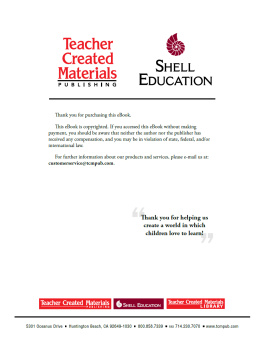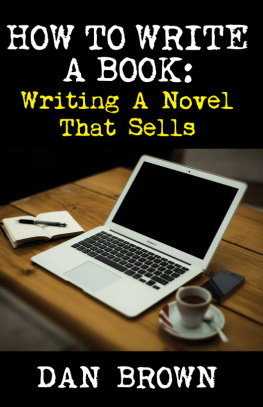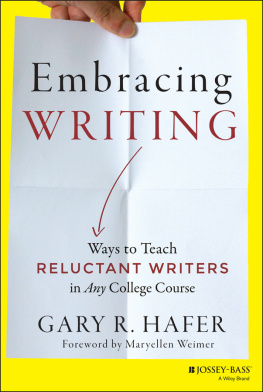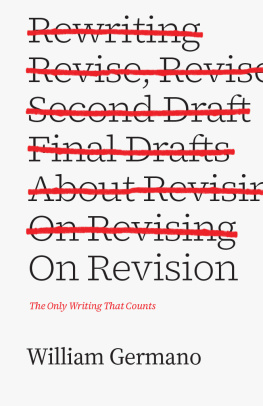.
If you would like to see a full list of the e-books Stenhouse offers, please visit us at www.stenhouse/allebooks
TEACH WRITING WELL
HOW TO ASSESS WRITING
INVIGORATE INSTRUCTION
AND RETHINK REVISION
Ruth Culham

Stenhouse Publishers
www.stenhouse.com
Copyright 2018 by Ruth Culham
All rights reserved. This e-book is intended for individual use only. You can print a copy for your own personal use and you can access this e-book on multiple personal devices (i.e. computer, e-reader, smartphone). You may not repro-duce digital copies to share with others, post a digital copy on a server or a website, make photocopies for others, or transmit in any form by any other means, electronic or me-chanical, without permission from the publisher.
Every effort has been made to contact copyright holders and students for permission to reproduce borrowed material. We regret any oversights that may have occurred and will be pleased to rectify them in subsequent reprints of the work.
Library of Congress Cataloging-in-Publication Data
Names: Culham, Ruth, author.
Title: Teach writing well : how to assess writing, invigorate instruction, and rethink revision / Ruth Culham.
Description: Portland, Maine : Stenhouse Publishers, [2018] | Includes bibliographical references. |
Identifiers: LCCN 2017049035 (print) | LCCN 2018001941 (ebook) | ISBN 9781625311184 (ebook) | ISBN 9781625311177 (pbk. : alk. paper)
Subjects: LCSH: English language--Composition and exercises--Study and teaching (Elementary) | English language--Composition and exercises--Evaluation. | Composition (Language arts)--Study and teaching (Elementary) | Composition (Language arts)--Evaluation.
Classification: LCC LB1576 (ebook) | LCC LB1576 .C8515 2018 (print) | DDC 372.62/3--dc23
LC record available at https://lccn.loc.gov/2017049035
Cover design, interior design, and typesetting by
Beth Ford, Glib Communications & Design
Manufactured in the United States of America
For Sam, always
CONTENTS
Acknowledgments
Writing and sharing ideas with teachers about teaching writing give me joy. Through writing I have built a life with friends and colleagues who sustain me every day. And it is through writing that I survive the passing of my beautiful son, Sam. Maybe knowing firsthand the power that writing brings to my life is what drives me to make sure every student has the ability to write well in order to navigate the streams, rivers, and oceans of what lies ahead, too.
To that end, I want to thank many people who have been key to my writing life. To Terry Cooper and Wendy Murray, who were the first to consider my ideas publishable. To Ray Coutu, who shaped them and then shaped me into a writer and, along the way, became one of the most treasured people in my life. To Laura Robb, who shines a bright light on what matters most every time we speak. To Libby Jachles, who is my sounding board and dearest friend. To Debbie Stewart, who is the best teacher and personal cheerleaderever. To Bridey Monterossi, who introduces children to writing lives through her music classesand knows the best happy hours in Portland. To Judy Hood and Marlee Krohn, who listen, make me laugh, and supply the wine and pie. To Dulcy and Prim, my two kitties, who run me and the houseno question.
But most of all, because of Teach Writing Well, I want to shower appreciation on Chris Downey, Beth Ford, and Tori Bachman. Chris, taking a book and editing it, line by line, to showcase the ideas and make it read smoothly, is an amazing talent. I couldnt be more grateful for the thoughtful consideration that went into editing every page. Beth, your talent and eye for style and design blow me awayalways have, always will. Im so proud to have your work on the cover and layout of this book. Tori, you are a magnificent editor and friend. You question, support, encourage, and make me a better writer (and person)and you do it all with grace and consideration for me, the writing process, and your needs as the publisher. No small feat. Thank you and Stenhouse for making sure this book was given the air to breathe.
Introduction

C hances are you picked up this book because you are already teaching writing to your students and want to know how you can do so even more successfully. I want to help you with that. I want to show you how the traits of writing can build your understanding of your students strengths and challenges as writers, how traitscoupled with revision in the writing processcan add depth and power to your students writing, and, most important, how you can all come to truly enjoy writing together.
How can you teach writing well? After many, many years of struggling with teaching writing myself, I have learned from students and colleagues what works and how to set up a writing classroom for success without overwhelming students and teachers alike. Ive come to believe that the traits and how they work within the writing process are a winning combination.
Everywhere I go, I hear how discouraged teachers feel as they approach the teaching of writing. What makes it so hard? For teachers, often its assessing students writing and then finding the words to communicate what needs work; for students, often its learning how to read their writing and then revise it to show their best thinking. Traits provide a solution to both of these challenges by giving you and your students succinct, clear language that describes specific craft elements. Im going to show you how to read students writing with traits in mind so you can get to know them as thinkers and learners. Then Im going to show you how to teach students how to use traits to produce their best writing. You can teach writing well.
This book focuses specifically on how to keep adding depth to students writing through revisionwhich, believe it or not, begins with formative assessment. Here we pick up once students have generated some writing, because often thats when you and your students need the most support. Here youll get guidance, tools, and ideas about how to help your students go from drafts to smoother, more polished, and thoughtful writing using the traits and the writing process. And here youll learn specific strategies with plenty of examples and practice to help you conquer revision. Really. And as a bonus, the ideas here fit within any curriculum, any classroom, any grade, at any time.
Here youll get guidance, tools, and ideas.
The Meeting That Changed Everything
Years ago, when I was still working at Education Northwest as a researcher in the assessment division, I screwed up the courage to contact Donald Graves, the pioneering author, professor, and researcher of writing process instruction, and boldly asked for a face-to-face meeting at the upcoming International Reading Association conference. I desperately wanted to know what he thought of using assessment as a guide to revisionhow the work I was committed to might dovetail with his seminal research and practice in writing process. I knew, even then, that revision was the tough nut to crack, and I wanted validation for the direction my work was taking. I dont think I slept the night before our meetingthe prospect of meeting someone Id considered a mentor in person for a few precious minutes was exhilarating. And humbling. And scarywhat if he scoffed at my work? Or didnt see the potential of linking the writing process, especially revision, and the traits?
Next page









